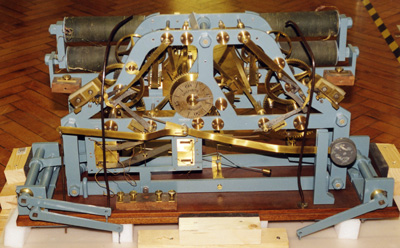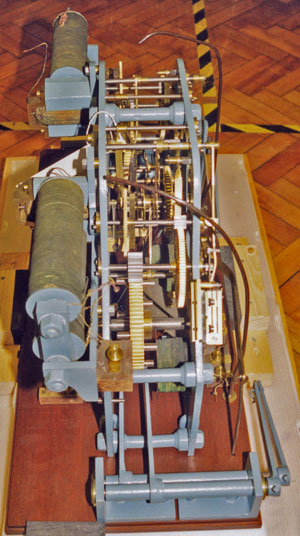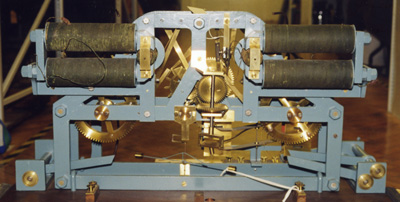Hornblotton Clock
[HOME] [Next] [Previous] [1 2 3 4 5 6]The Hornblotton Clock was the first electric clock in the country to have a striking mechanism. It was designed by Charles Shepherd and installed in 1883. The clock face is on the side of the tower facing the house, as this was the only place from where it could be seen. Now with trees grown up near to it you would need to know it was there to see it as the dial is relatively small. It could never have been seen from the village as it is too far away. Shepherd was perhaps the leading clock maker of his time, providing electric clocks for the Great Exhibition of 1851 as well as for the Royal Observatory at Greenwich for the time signals.
The mechanism relied on a pendulum in the house connected by electric cable to the church, see next page. The pendulum in the house has long since disappeared and the mechanism was virtually abandoned in the tower until 1984, when it was taken to the Science Museum in London for restoration. It has been kept in their main store at Olympia, where these pictures were taken.
The large coils form the two electric motors which operated the bells. These worked the levers, which pulled the cables to sound the bells (hours and quarters), and these are at the bottom left and right corners of the mechanism. The clock was battery powered, with the batteries for the striking motors having been under the floor in the belfry and those for the time pulse in the basement of the house with the pendulum.



[HOME] [Next] [Previous] [1 2 3 4 5 6]